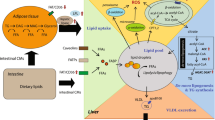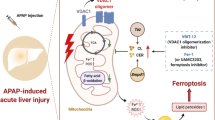Abstract
Background
The hydrophilic bile salt ursodeoxycholate (UDCA) inhibits injury by hydrophobic bile acids and is used to treat cholestatic liver diseases. Interestingly, hepatocyte cell death from bile acid-induced toxicity occurs more frequently from apoptosis than from necrosis. However, both processes appear to involve the mitochondrial membrane permeability transition (MPT). In this study, we determined the inhibitory effect of UDCA on deoxycholic acid (DCA)-induced MPT in isolated mitochondria by measuring changes in transmembrane potential (ΔΨm) and production of reactive oxygen species (ROS). In addition, we examined the expression of apoptosis-associated proteins in mitochondria isolated from livers of bile acid-fed animals.
Materials and Methods
Adult male rats were maintained on standard diet supplemented with DCA and/or UDCA for 10 days. Mitochondria were isolated from livers by sucrose/percoll gradient centrifugation and MPT was measured using spectrophotometric and fluorimetric assays. ΔΨm and ROS generation were determined by FACScan analysis. Cytoplasmic and mitochondrial protein abundance were determined by Western blot analysis.
Results
DCA increased mitochondrial swelling 25-fold over controls (p < 0.001); UDCA reduced the swelling by >40% (p < 0.001). Similarly, UDCA inhibited DCA-mediated release of calcein-loaded mitochondria by 50% (p < 0.001). ΔΨm was significantly decreased in mitochondria incubated with DCA but not with UDCA. ΔΨm disruption was followed closely by increased superoxide anion and peroxides production (p < 0.01). Coincubation of mitochondria with UDCA significantly inhibited the changes associated with DCA (p < 0.05). In vivo, DCA feeding was associated with a 4.5-fold increase in mitochondria-associated Bax protein levels (p < 0.001); combination feeding with UDCA almost totally inhibited this increase (p < 0.001).
Conclusion
UDCA significantly reduces DCA-induced disruption of ΔΨm, ROS production, and Bax protein abundance in mitochondria, suggesting both short- and long-term mechanisms in preventing MPT. The results suggest a possible role for UDCA as a therapeutic agent in the treatment of both hepatic and nonhepatic diseases associated with high levels of apoptosis.







Similar content being viewed by others
References
Schmucker DL, Ohta M, Kanai S, Sato Y, Kitani K. (1990) Hepatic injury induced by bile salts: correlation between biochemical and morphological events. Hepatology 12: 1216–1221.
Heuman DM, Mills AS, McCall J, Hylemon PB, Pandak WM, Vlahcevic ZR. (1991) Conjugates of ursodeoxycholate protect against cholestasis and hepatocellular necrosis caused by more hydrophobic bile salts. In vivo studies in the rat. Gastroenterology 100: 203–211.
Quist RG, Ton-Nu H-T, Lillienau J, Hofmann AF, Barrett KE. (1991) Activation of mast cells by bile acids. Gastroenterology 101: 446–456.
Podda M, Ghezzi C, Battezzati PM, Crosignani A, Zuin M, Roda A. (1990) Effects of ursodeoxycholic acid and taurine on serum liver enzymes and bile acids in chronic hepatitis. Gastroenterology 98: 1044–1050.
Chazouillères O, Poupon R, Capron J.-P, et al. (1990) Ursodeoxycholic acid for primary sclerosing cholangitis. J. Hepatology 11: 120–123.
Poupon RE, Poupon R, Balkau B, and the UDCAPBC Study Group. (1994) Ursodiol for the long-term treatment of primary biliary cirrhosis. N. Engl J. Med. 330: 1342–1347.
Rodrigues CMP, Fan G, Ma X, Brites D, Kren BT, Steer CJ. (1997) A novel role for ursodeoxycholic acid in modulating apoptosis in rat liver, isolated rat hepatocytes and human hepatoma cells. Hepatology 26: 366A.
Spivey JR, Bronk SF, Gores GJ. (1993) Glycochenodeoxycholate-induced lethal hepatocellular injury in rat hepatocytes. Role of ATP depletion and cytosolic free calcium. J. Clin. Invest. 92: 17–24.
Krähenbühl S, Talos C, Fischer S, Reichen J. (1994) Toxicity of bile acids on the electron transport chain of isolated rat liver mitochondria. Hepatology 19: 471–479.
Schaffner F, Bacchin PG, Hutterer F, et al. (1971) Mechanism of cholestasis. 4. Structural and biochemical changes in the liver and serum in rats after bile duct ligation. Gastroenterology 60: 888–897.
Krähenbühl S, Stucki J, Reichen J. (1992) Reduced activity of the electron transport chain in liver mitochondria isolated from rats with secondary biliary cirrhosis. Hepatology 15: 1160–1166.
Imberti R, Nieminen A-L, Herman B, Lemasters JJ. (1993) Mitochondrial and glycolytic dysfunction in lethal injury to hepatocytes by t-butylhydroperoxide: Protection by fructose, cyclosporine A and trifluoperazine. J. Pharmacol. Exp. Ther. 265: 392–400.
Pastorino JG, Synder JW, Serroni A, Hoek JB, Farber JL. (1993) Cyclosporine and carnitine prevent the anoxic death of cultured hepatocytes by inhibiting the mitochondrial permeability transition. J. Biol. Chem. 268: 13791–13798.
Zamzami N, Marchetti P, Castedo M, et al. (1995) Sequential reduction of mitochondrial transmembrane potential and generation of reactive oxygen species in early programmed cell death. J. Exp. Med 182: 367–377.
Kroemer G. (1997) The proto-oncogene Bcl-2 and its role in regulating apoptosis. Nat. Med. 3: 614–620.
Xiang J, Chao DT, Korsmeyer SJ. (1996) BAX-induced cell death may not require interleukin 1β-converting enzyme-like proteases. Proc. Natl. Acad. Sci. USA 93: 14559–14563.
Botla R, Spivey JR, Aguilar H, Bronk SF, Gores GJ. (1995) Ursodeoxycholate (UDCA) inhibits the mitochondrial membrane permeability transition induced by glycochenodeoxycholate: A mechanism of UDCA cytoprotection. J. Pharmacol. Exp. Ther. 272: 930–938.
Kurosawa H, Que FG, Roberts LR, Fesmier PJ, Gores GJ. (1997) Hepatocytes in the bile duct-ligated rat express Bcl-2. Am. J. Physiol. 272: G1587–G1593.
Koga H, Sakisaka S, Ohishi M, Sata M, Tanikawa K. (1997) Nuclear DNA fragmentation and expression of Bcl-2 in primary biliary cirrhosis. Hepatology 25: 1077–1084.
Walajtys-Rhode E, Zapatero J, Moehren G, Hoek JB. (1992) The role of the matrix calcium level in the enhancement of mitochondrial pyruvate carboxylation by glucagon pretreatment. J. Biol. Chem. 267: 370–379.
Sokol RJ, Devereaux M, Mierau GW, Hambidge KM, Shikes RH. (1990) Oxidant injury to hepatic mitochondrial lipids in rats with dietary copper overload. Modification by vitamin E deficiency. Gastroenterology 99: 1061–1071.
Dupourque D, Kun E. (1969) Cytoplasmic and mitochondrial malate dehydrogenases from beef kidney. Methods Enzymol. 13: 116–122.
LaRusso NF, Flower S. (1979) Coordinate secretion of acid hydrolases in rat bile. Hepatocyte exocytosis of lysosomal protein? J. Clin. Invest. 64: 948–954.
Beaufay H, Amar-Costesec A, Feytmans E, et al. (1974) Analytical study of microsomes and isolated subcellular membranes from rat liver. I. Biochemical methods. J. Cell Biol. 61: 188–200.
Cathcart R, Schwiers E, Ames BN. (1983) Detection of picomole levels of hydroperoxides using a fluorescent dichlorofluorescein assay. Anal. Biochem. 134: 111–116.
Carter WO, Narayanan PK, Robinson JP. (1994) Intracellular hydrogen peroxide and superoxide anion detection in endothelial cells. J. Leukocyte Biol. 55: 253–258.
Zamzami N, Marchetti P, Castedo M, et al. (1995) Reduction in mitochondrial potential constitutes an early irreversible step of programmed lymphocyte death in vivo. J. Exp. Med. 181: 1661–1672.
Trembley JH, Ebbert JO, Kren BT, Steer CJ. (1996) Differential regulation of cyclin B1 RNA and protein expression during hepatocyte growth in vivo. Cell Growth Differ. 7: 903–916.
Kren BT, Kumar NM, Wang S-q, Gilula NB, Steer CJ. (1993) Differential regulation of multiple gap junction transcripts and proteins during rat liver regeneration. J. Cell Biol. 123: 707–718.
Sokol R, Devereaux M, Khandwala R, O’Brien K. (1993) Evidence for involvement of oxygen free radicals in bile acid toxicity to isolated rat hepatocytes. Hepatology 17: 869–881.
Bernardi P. (1992) Modulation of the mitochondrial cyclosporin A-sensitive permeability transition pore by the proton electochemical gradient. Evidence that the pore can be opened by membrane depolarization. J. Biol. Chem. 267: 8834–8839.
Fan G, Kren BT, Steer CJ. (1998) Regulation of apoptosis-associated genes in the regenerating liver. Semin. Liver Dis. (In press).
Que FG, Phan VA, Phan VH, LaRusso NF, Gores GJ. (1997) Glycoursodeoxycholic acid (GUDC) inhibits cholangiocyte apoptosis: A mechanism of GUDC cytoprotection. Hepatology 26: 255A.
Zamzami N, Susin SA, Marchetti P, et al. (1996) Mitochondrial control of nuclear apoptosis. J. Exp. Med. 183: 1533–1544.
Newmeyer DD, Farschon DM, Reed JC. (1994) Cell-free apoptosis in Xenopus egg extracts: Inhibition by Bcl-2 and requirement for an organelle fraction enriched in mitochondria. Cell 79: 353–364.
Kroemer G, Zamzami N, Susin SA. (1997) Mitochondrial control of apoptosis. Immunol. Today 18: 44–51.
Miura M, Zhu H, Rotello R, Hartwieg EA, Yuan J. (1993) Induction of apoptosis in fibroblasts by IL-1β-converting enzyme, a mammalian homolog of the C. elegans cell death gene ced-3. Cell 75: 653–660.
Vayssière J-L, Petit PX, Risler Y, Mignotte B. (1994) Commitment to apoptosis is associated with changes in mitochondrial biogenesis and activity in cell lines conditionally immortalized with simian virus 40. Proc. Natl. Acad. Sci. USA 91: 11752–11756.
Ljubuncic P, Fuhrman B, Oiknine J, Aviram M, Bomzon A. (1996) Effect of deoxycholic acid and ursodeoxycholic acid on lipid peroxidation in cultured macrophages. Gut 39: 475–478.
Invernizzi P, Salzman AL, Szabó C, Ueta I, O’Connor M, Setchell KDR. (1997) Ursodeoxycholate inhibits induction of NOS in human intestinal epithelial cells and in vivo. Am. J. Physiol. 273: G131–G138.
Kren BT, Rodrigues CMP, Setchell KDR, Steer CJ. (1995) Post-transcriptional regulation of mRNA levels in rat liver associated with deoxycholic acid feeding. Am. J. Physiol. 269: G961–G973.
Yang E, Zha J, Jockel J, Boise LH, Thompson CB, Korsmeyer SJ. (1995) Bad, a heterodimeric partner for Bcl-XL and Bcl-2, displaces Bax and promotes cell death. Cell 80: 285–291.
Boise LH, González-Garcia M, Postema CE, et al. (1993) Bcl-x, a bcl-2-related gene that functions as a dominant regulator of apoptotic cell death. Cell 74: 597–608.
Vander Heiden MG, Chandel NS, Williamson EK, Schumacker FT, Thompson CB. (1997) Bcl-xL regulates the membrane potential and volume homeostasis of mitochondria. Cell 91: 627–637.
Yang J, Liu X, Bhalla K, et al. (1997) Prevention of apoptosis by Bcl-2: Release of cytochrome c from mitochondria blocked. Science 275: 1129–1132.
Kluck RM, Bossy-Wetzel E, Green DR, Newmeyer DD. (1997) The release of cytochrome c from mitochondria: A primary site for Bcl-2 regulation of apoptosis. Science 275: 1132–1136.
Kantrow SP, Piantadosi CA. (1997) Release of cytochrome c from liver mitochondria during permeability transition. Biochem. Biophys. Res. Commun. 232: 669–671.
Susin SA, Zamzami N, Castedo M, et al. (1996) Bcl-2 inhibits the mitochondrial release of an apoptogenic protease. J. Exp. Med. 184: 1331–1341.
Acknowledgements
The authors thank Jeffrey Galecke for technical assistance with mitochondrial isolation and Julie Pribyl for her assistance with FACS analysis. This work was supported in part by a grant from the Minnesota Medical Foundation (to C. J. S.) and by Postdoctoral Fellowship BPD/6082/95 from Junta Nacional de Investigação Científica e Tecnológica, Lisbon, Portugal (to C. M. P. R.).
Author information
Authors and Affiliations
Corresponding author
Additional information
Communicated by B. O’Malley.
Rights and permissions
About this article
Cite this article
Rodrigues, C.M.P., Fan, G., Wong, P.Y. et al. Ursodeoxycholic Acid May Inhibit Deoxycholic Acid-Induced Apoptosis by Modulating Mitochondrial Transmembrane Potential and Reactive Oxygen Species Production. Mol Med 4, 165–178 (1998). https://doi.org/10.1007/BF03401914
Accepted:
Published:
Issue Date:
DOI: https://doi.org/10.1007/BF03401914




